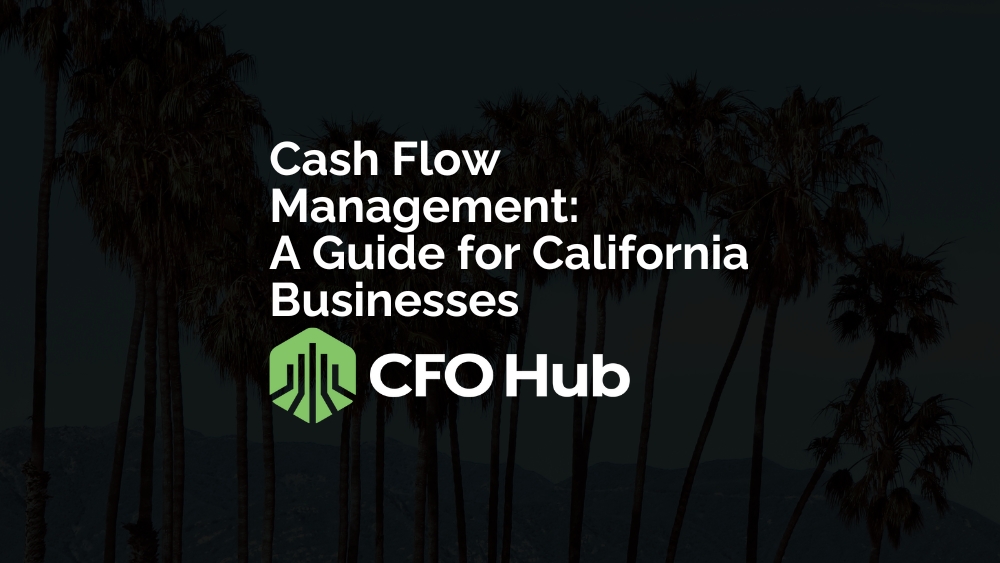Understanding Cash Flow vs. Profit
Many business owners confuse profitability with positive cash flow. Your income statement might show a profit, but if customers haven’t paid their invoices or you’ve invested heavily in inventory, your bank account tells a different story. Cash flow represents the actual money moving in and out of your business accounts, while profit is an accounting concept that may include revenue you haven’t collected yet.
California businesses face unique challenges that can strain cash flow. High commercial rent, substantial payroll taxes, workers’ compensation insurance costs, and minimum wage increases all demand careful financial management. Understanding the distinction between profit and cash allows you to make better decisions about spending, hiring, and growth investments.
Building a Cash Flow Forecasting System
Successful cash management starts with forecasting. A 13-week rolling cash flow forecast gives you visibility into upcoming shortfalls or surpluses, allowing you to act proactively rather than reactively. Start by listing all expected cash receipts: customer payments, loan proceeds, and any other incoming funds. Then document all anticipated cash disbursements: payroll, rent, vendor payments, tax obligations, and loan payments.
Update your forecast weekly, comparing actual results against projections. This practice helps you identify patterns, such as seasonal fluctuations or customers who consistently pay late. Over time, your forecasts become more accurate, giving you confidence in your financial decision-making. According to the U.S. Bank study, 82% of business failures stem from poor cash management, making forecasting an essential survival tool.
Accelerating Receivables
Getting paid faster dramatically improves cash position. Issue invoices immediately upon completing work or delivering products. California law allows businesses to charge interest on late B2B payments, but prevention works better than collection. Consider offering small discounts for early payment—a 2% discount for payment within 10 days often motivates customers while costing less than the carrying cost of delayed payment.
Implement clear payment terms upfront. Require deposits for large projects or new customers. For recurring services, switch to automatic billing or retainer arrangements. These strategies reduce the gap between delivering value and receiving payment, keeping your cash cycle tight.
Managing Payables Strategically
While accelerating collections, manage your payables strategically without damaging vendor relationships. Take advantage of payment terms offered—if a vendor gives you net 30 terms, pay on day 30, not day 10. This keeps cash in your account longer without penalty.
However, avoid being penny-wise and pound-foolish. Maintain good relationships with critical vendors by paying them reliably. Late payments can result in lost early-payment discounts, damaged credit terms, or supply disruptions that cost far more than the temporary cash preservation.
Maintaining Cash Reserves
Every California business should maintain a cash reserve equal to at least three months of operating expenses. This buffer protects you during slow periods, unexpected emergencies, or economic downturns. Building reserves requires discipline—treat your reserve contribution like any other essential expense.
Start small if necessary. Even setting aside 5% of revenue creates a foundation you can build upon. As your business grows and cash flow stabilizes, increase this percentage. Having reserves transforms how you operate, eliminating the constant stress of payroll-to-payroll survival and allowing you to capitalize on growth opportunities when they arise.
Leveraging Professional Financial Guidance
Many business owners lack the time or expertise to implement robust cash management systems while running daily operations. Professional accounting services provide the infrastructure and expertise needed to monitor cash flow effectively. A fractional CFO brings strategic financial leadership without the cost of a full-time executive, helping you build forecasting systems, negotiate better terms, and plan for growth.
These professionals also ensure you’re taking advantage of tax strategies specific to California businesses, optimizing the timing of deductible expenses and income recognition to preserve cash. They help you understand which financial metrics matter most for your industry and company stage, transforming raw data into actionable insights.
Take Control of Your Cash Flow Today
Cash flow management isn’t just about survival, it’s about creating the financial foundation for sustainable growth. Whether you’re struggling with cash crunches or simply want to optimize your financial operations, professional guidance makes the difference between reactive crisis management and proactive financial leadership.
CFO Hub specializes in helping California businesses build stronger financial systems through our Fractional CFO and Accounting Services. We’ll work with you to implement cash flow forecasting, improve your collections process, and develop strategies tailored to your business model. Ready to take control of your cash flow? Contact us for a free consultation and discover how our team can strengthen your financial operations.
Jack Perkins, CPA founded CFO Hub to provide strategic finance and accounting services to enterprises of all sizes. Prior to founding CFO Hub, Jack served as the CFO and Controller of rapidly growing enterprises in California. Jack's written content has been featured in Forbes, Entrepreneur, and several other notable publications.
Visit Jack's Expert Hub to learn more about his experience and read more of his editorial content

